It’s finally here—my compilation of heart words and accompanying instructional slide show! If you haven’t heard of heart words or don’t fully understand how or why to teach them, check out this article.
Heart words are high frequency words that are irregular. Irregular words have graphemes that are not “behaving” or making the right sound. Commonly known heart words are the, of, said, could, and again. Words are also considered irregular—and thus heart words—if they have spelling patterns that the students do not yet know. So, light could be a heart word if the students have not yet been taught igh.
I’m going to say right now that my list of kindergarten heart words and how best to analyze them is constantly in flux. I mean, I made changes yesterday and know I’ll make more changes tomorrow. But this uncertainty is no reason not to get going with teaching high frequency irregular words with the heart word method as soon as possible.
I made these posters for my classroom. Students can refer to them while reading or writing. No, I have not taught all of these words using the heart word method and yes, I realize that most kindergarten students do not need to think about many of these words in this way, that it might seem too hard for kindergarten. I first learned about heart words in January and it has taken me several months to think through how I might apply this in my classroom. Because of that, I posted these words all at once instead of slowly when introduced. I won’t do it that way next year. But guess what? I’m glad I did this year because, after doing the slide show a few times (just portions of it; it’s too long to do all at once), a majority of my students understand what heart words are about and can use this on their own as a reference when reading and writing. Very helpful!
For systematic and explicit instruction of heart words, I use the We Love Heart Words slide show, which I created and share with you here. There are instructions included with the slide show and more of my thinking below. I only teach a few slides at a time. Depending on the time of year, you might teach the first six, slides 10-15, or all slides with words with a silent e. Also, I remind you again that my thinking on the tiny details of heart words changes constantly, so be flexible with me, with your own thinking, and flexible in your delivery. The slide show is editable so you can change it—probably over and over again like I have—including the order in which you teach the words!
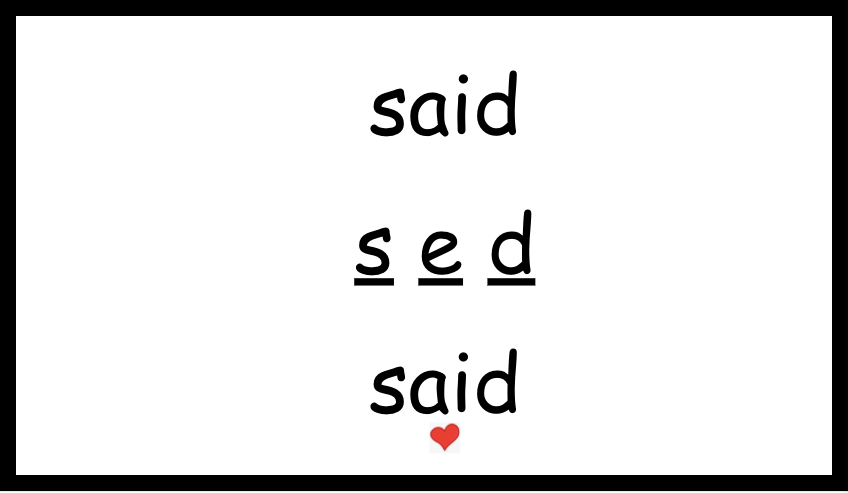
Things I need to tell you so you’re not wondering:
1. Some of the words I teach early in the school year, long before the students would understand the analysis of them. For example, I indirectly start teaching the in August (you’ll see, when August gets here and I start sharing everything). Students will know how to read and spell it just fine by the time we start using the heart word slide show. So why did I include it? Because, in my opinion, it’s perfect to start with a word they are so familiar with and use all the time. The same with the word a although I do still have one student who writes u for a. Or, at least he did before we started the heart word slide show!
2. Try to get a routine and rhythm going so students can focus on the phonemes and graphemes and not what they’re supposed to say and when. I’ve been using this (based on all that I’ve read and learned so far):
1. Show the word by itself and say, “The word is ______. What’s the word?” Click to the next slide.
2. Click again to make the word appear. “What’s this word?” Sometimes call on individual students to keep them engaged and accountable. “How many sounds are in this word?” Help students count the number of sounds in the word. My students are trained to put up one finger for each sound.
3. Click to make the phonemes appear. “How do we spell _____?” “What letter do we use to spell the first sound?” Repeat for each sound. Mix it up; don’t always ask the sounds in order. If students cannot answer the hard part or don’t remember, draw their attention to the correct spelling of the word (shown above the phoneme segmentation).
4. Click to make the word appear again. Say, “What’s the hard part to remember by heart?” Sometimes call on individual students to keep them engaged and accountable. Click to make the heart appear. Repeat this question and the clicking if the word has two or three hard parts to remember by heart.
3. I really, really wanted to bring the phonemes in one at a time rather than appearing all at once, but Google slides was having none of that. Also, it makes so much sense to write the sound(s) above the letter(s) that have hearts—like I did on my posters—but that was impossible in the Google slide format.
4. If you have short songs or other reminders that help students remember high frequency words, I would throw them in while going through the slide routine. For example, I will continue to say, “Let’s put of in the OVen” and draw a picture of that happening. My students didn’t know the rule about v can’t be the last letter of any word in our language, but we definitely talk about it now and why have, love, live, and give have a silent e. And I will seize the opportunity to teach students that when the letter a follows a w, it usually makes the short o sound (this only happens once in the slide show—want—but will see it in other common words).
5. I tried to put similar words together: to/do, some/come, full/pull, any/many, one/once, etc.
6. I am still wavering on there and where. Do you hear a long a sound or a short e sound? To me, it’s more of a short e sound, but I notice my students tend to write thayr, so they must be hearing a long a sound. The beauty of the slide show? I can change it again tomorrow!
7. I know that oul is usually grouped together as a spelling pattern in could, would, and should, but I also know that my kindergartners will not see oul all together. Therefore, I decided to break it up into ou and then l and say that ou is making the oo sound and that the l is silent. There are some students to whom I will teach “oh you lucky duck” to help them remember how to spell it (ould).
8. Keep it fast-paced.
Okay, enough for now! We’ll be getting back to this in the fall when we start introducing heart words. Go ahead and give it a try now though so you can see if it’s something you might plan on using.

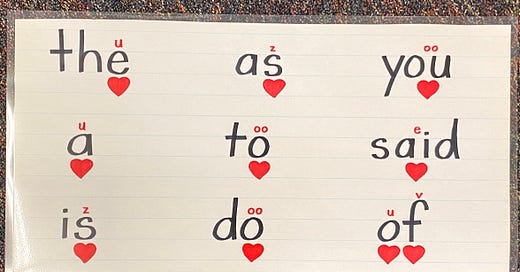



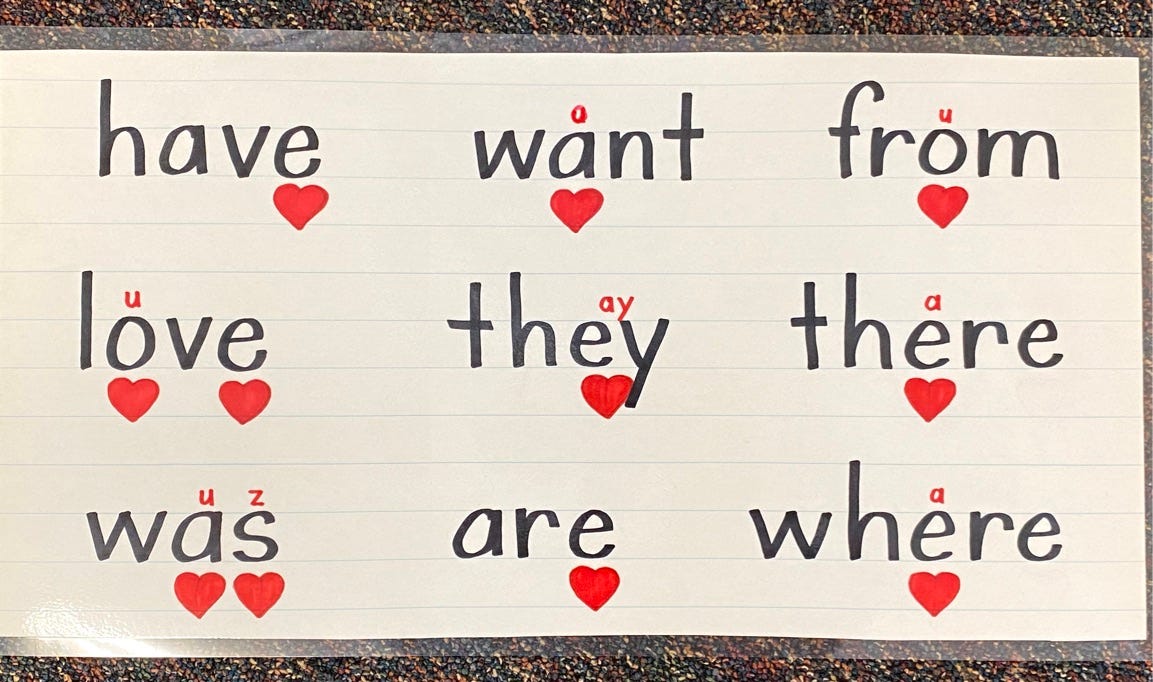
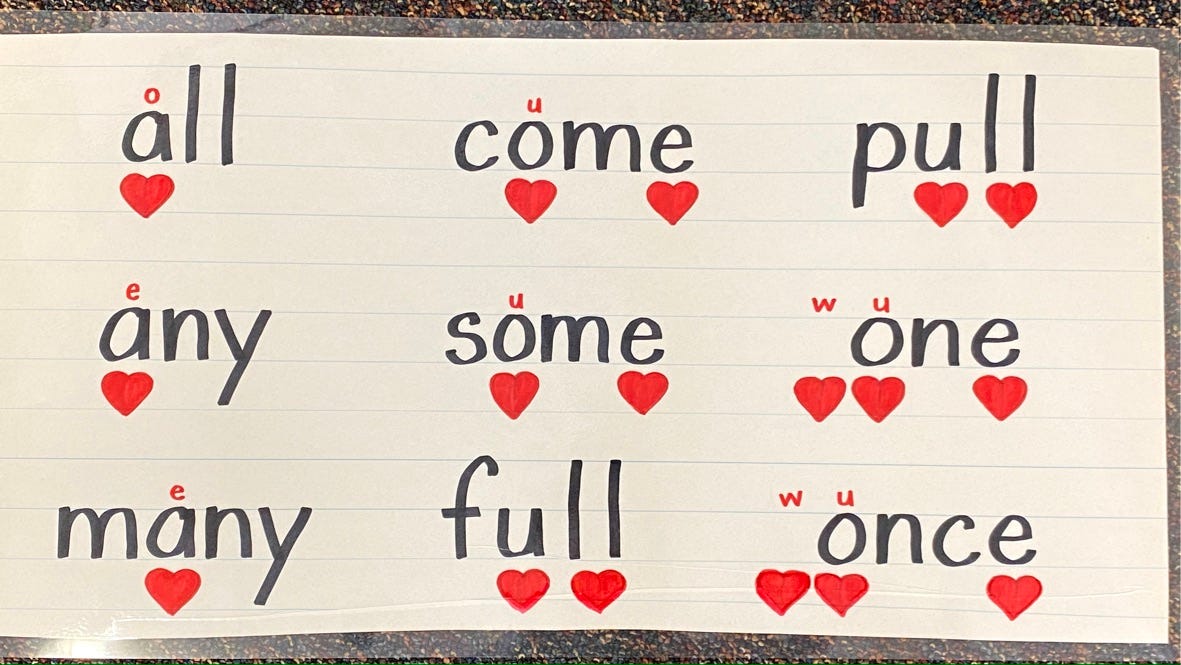
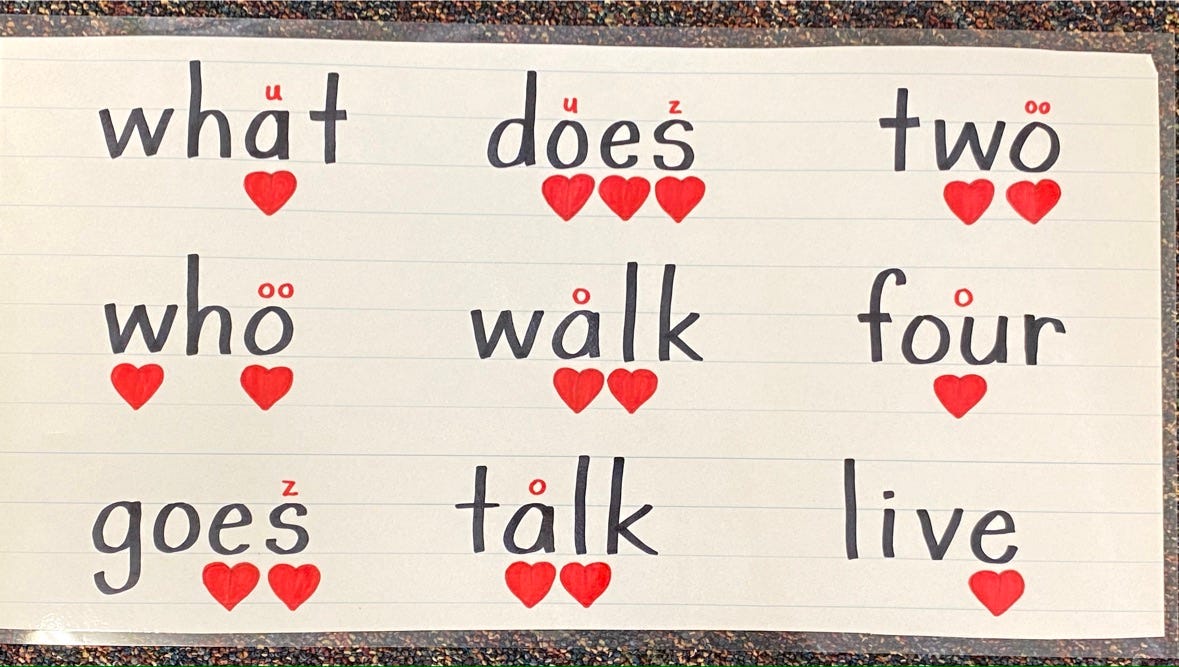
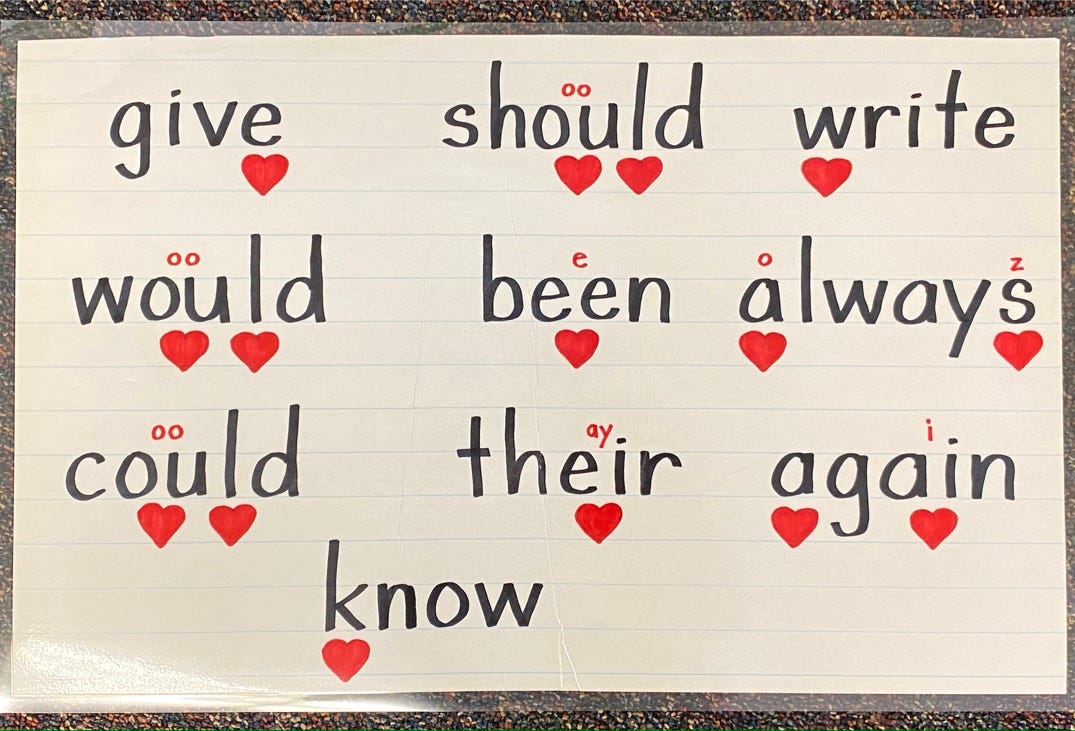
Great! I had to request access.
Thanks for subscribing!
Hey Randee! I've been a subscriber of yours for a little bit now and have been digging deeper into the content this summer as my oldest is starting Kindergarten in the Fall. I want to be prepared with materials that might help him if needed!
I've been reading through this post and the Heart Words google slideshow this week and I saw the comments you made about the limitations you came across in Google Slides when creating it. I worked with a copy of it and was wondering if you'd look at one or two of the animation updates I made to see if I correctly captured what you were saying you wanted to do but couldn't given the formatting limitations (https://docs.google.com/presentation/d/1-qOJ1pZK1trP4_jdIfUGZRGbedqlpiaMaLxd7ph8BbU/edit?usp=sharing) - I just want to make sure what I did is correct, or at the very least, won't harm the learning process for when the time comes to work with him on these.
Let me know if you can't access that file I shared.
Thanks so much for all your great resources and information!